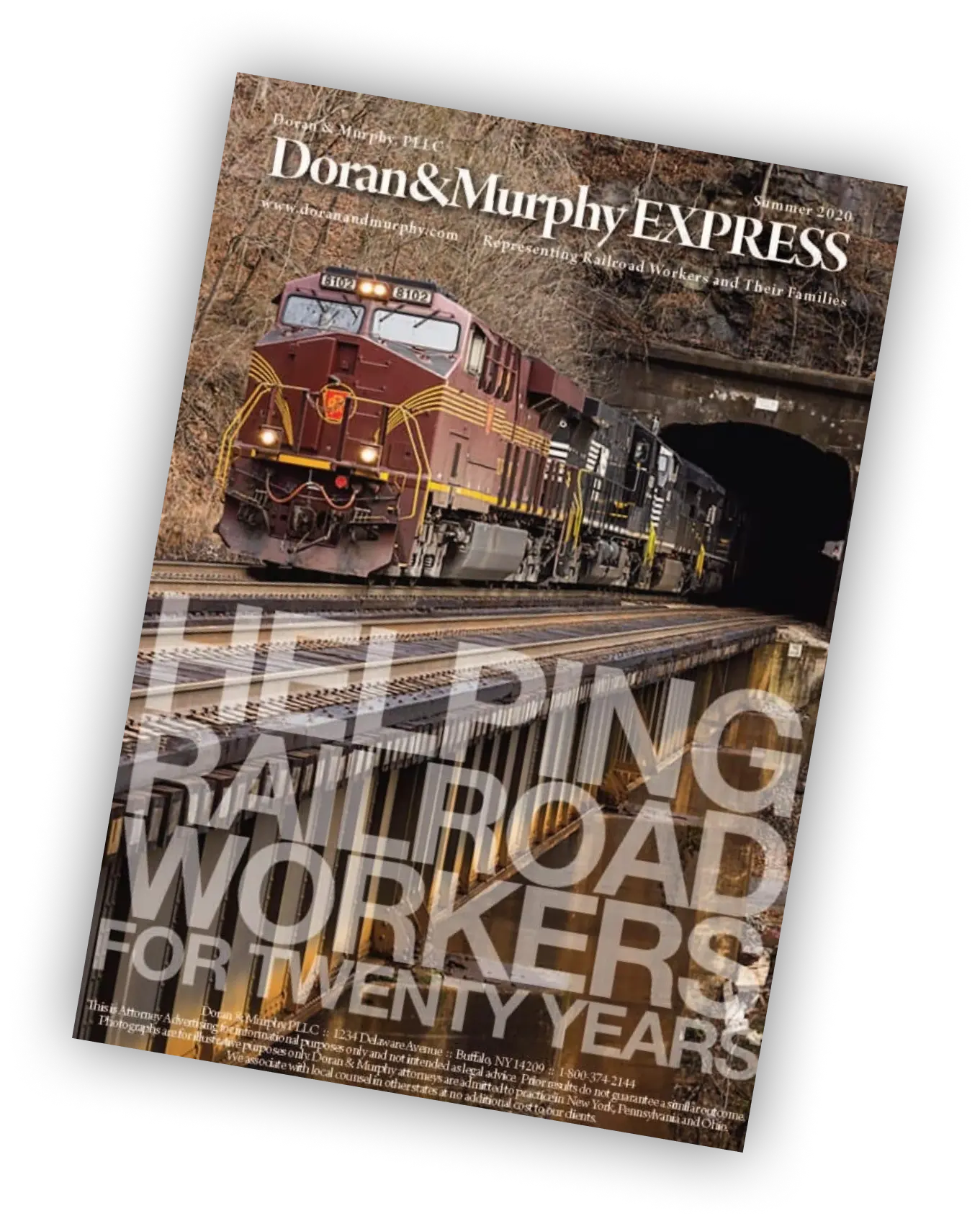
In 2012, the world’s preeminent experts on the causes of cancer at the International Agency for Research on Cancer (IARC) published Monograph 105, the most comprehensive scientific study to date on diesel exhaust and its ability to cause cancer. The IARC study closely examined all the medical studies that had been previously published over many decades and concluded that the evidence was clear: diesel exhaust causes lung cancer. Importantly, IARC scientists found that some of the best-conducted and most compelling studies concerning diesel exhaust and cancer were conducted by Dr. Eric Garshick and his colleagues at Harvard Medical School. Part 1 of this blog (which can be accessed here) discussed some of the published medical studies of the last 70 years which concluded that diesel exhaust could cause cancer, including Dr. Garshick’s studies of railroad workers. This current blog, Part 2, addresses the creative ways used by railroad legal departments and lawyers to escape liability in cancer cases brought pursuant to the Federal Employers Liability Act (FELA) by railroad employees based on diesel exhaust exposure over the last several decades.
Claims by railroad workers for injuries caused by diesel exhaust go back many decades. In these early cases, the railroad attorneys typically argued that there was no agreement or consensus in the medical community that diesel exhaust was hazardous. Over time as more and more studies were published, the railroad began arguing that any published medical studies which concluded that diesel exhaust caused cancer were based on “junk science.” The railroad attorneys would reference publications that disputed any link between diesel exhaust and cancer. The studies relied on by the railroad were usually funded by diesel engine manufacturers, oil companies, and their lobbying groups. They were conducted and written by industry-paid representatives who earned millions of dollars. Not surprisingly, these industry-sponsored publications found that diesel exhaust did not cause cancer and argued that any studies which found that diesel exhaust caused cancer were inherently flawed. The railroad attorneys were only too happy to use these published studies in trials brought by rail workers suffering from cancer in an attempt to evade responsibility.
The railroads also sought to defend employee cancer cases by arguing that railroad workers had no more diesel exhaust exposure than anybody else living in any urban area. To help prove this, the railroad and their lawyers hired well-paid industrial hygiene consultants to perform air testing in different railroad environments chosen by the railroads, their lawyers and these hired consultants. To help make their defense arguments seem more credible to jurors, the railroad attorneys hatched an ingenious plan to publish helpful air testing results so they could be used to defend cancer cases all across the country. This railroad plan was referenced in a confidential 1997 letter written by a railroad defense lawyer to a large Class 1 freight railroad.
The railroad attorney’s 1997 letter discussed approaching a well-known railroad industrial hygiene consultant “about the prospect of preparing an article on the results of his diesel measurements.” The letter noted that this longtime railroad consultant “was very receptive as we expected” and “was also receptive to our suggestion that there may be an advantage to including a co-author from academia.” This letter went on to say that an attorney representing railroads had already met with potential co-authors, no doubt wanting to ensure a favorable publication for the railroads. With funding from the railroads, the industrial hygiene consultant published his work on diesel exhaust which essentially said rail workers did not have any excessive exposure. After his study was published, the railroad consultant regularly testified against railroad worker cancer victims using his publication to bolster his opinions about the lack of diesel exhaust exposure in dozens of trials and depositions. This same railroad consultant has since admitted to being paid almost $20 million by railroads and other industrial clients over the years!
So just how far were and are railroads willing to go to defend cancer cases brought by employees? Perhaps the best way to illustrate this is with a real-life example from a trial our office had for railroad worker with lung cancer. The railroad’s star industrial hygiene witness testified about the diesel exposures of our railroad client: “he was not exposed to excessive levels of diesel exhaust” and that his exposure was, “if you calculate it out on an average basis, probably not much different that somebody living in Los Angeles.”
However, under cross-examination, he admitted that up to 85% of his income of approximately $500,000/year was earned from railroads, that he had never testified against a railroad, that he attended regular “confidential” meetings with railroad claim agents and attorneys about how to defend the railroads in cancer cases filed by workers, and that he had never tested the railroad work locations where our client was employed and was exposed to diesel exhaust. Perhaps most astonishing was the railroad expert’s admission that he had “no idea what [the railroad] was doing regarding industrial hygiene in the 1960s, 1970s and 1990s” which, ironically, is the exact time period that our client had the heaviest exposures. Thankfully the jury saw through the railroad arguments and awarded a large verdict to the rail worker for his cancer.
As more and more medical studies about the hazards of diesel exhaust are published, it will be harder for railroads to argue that diesel exhaust doesn’t cause cancer. However, railroad lawyers will likely continue to argue that there is insufficient exposure to cause cancer in any cases brought by railroad cancer victims.
It is important to call an experienced FELA lawyer if you or a loved one has been diagnosed with cancer after many years of working in diesel exhaust. The lawyers at Doran and Murphy are ready to answer any questions you may have.





